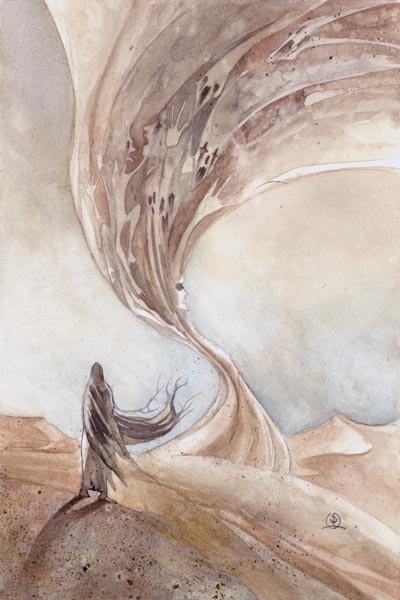
by Stephanie Pui-Mun Law
SHR Main Page | Opera Propria | Calatin's Sanctum
 |
by Stephanie Pui-Mun Law |
Rahimani Allah! May God have mercy on me! I did my best to ensure that the manuscripts of Blood and Sand and Secrets in Sand were as perfect as possible, but somehow some errors managed to slip past. These are noted below:
Maps: I think Atlas did a wonderful job with the grotty scrawls I sent them, but a number of errors crept into the labelling of some of the maps, something that I should emphasise was entirely due to my dreadful handwriting, and the fact that I just had to complicate things by including lots of Arabic words, didn't I? Corrections are below:
Page 5 (Lands of Islam): 5 = Qayrawan, 8 = Aleppo.
Page 20 (Acre): 3 = Original Muslim Walls and Ditch.
Page 24 (Cairo): The northernmost canal is called "al-Khalij."
Page 27 (Damascus): 8 = Madrasa of al-'Adil, 11 = Madrasa of al-'Aziz.
Page 29 (Baghdad): 5 = Bab al-Khurasan (Khurasan Gate), 9 = Bab al-Dhahab Palace and Mosque, D = Rusafa Quarter, E = Bab al-Basra Quarter, J = Qurayya Quarter.
Page 101 (The Levant Tribunal): Urania is a covenant, the capital of Georgia is Tiflis, and Al-Arama is not ruined (an idea from a previous version of the tribunal history that was discarded).
Page 102 (Aedes Veritatis): 12 = 'Umar's Quarters.
Credits: The covenant of Venti Rosa was originally conceived by Jerome Darmont. He has developed a fully-detailed version of Venti Rosa and two more Levantine covenants, all of which are contained in this zipped download.
Page 49: The Hanafis forbid the drinking of alcohol if it is made from grapes, dates, honey, wheat and barley, but not if it is made from other substances. However, they also do not allow their followers to get drunk!
Page 57: The Arabian Nights: The title "Thousand and One Nights" was first recorded in the 12th century.
Page 65: At the bottom of the table under "Calculating spell levels," the "blank" duration should appear beneath the Hermetic duration of Permanent/Instant, with the Islamic duration of Permanent/Instant next to it. In other words, the Islamic Permanent/Instant duration is one magnitude higher than the Hermetic.
Page 65: Sample Islamic Spell (The Wrath of Allah): The text on targeting should read: "Since the range of this spell is voice, the caster does not need to be able to see the target group, provided that the caster speaks aloud words identifying the target group in two unambiguous and independent ways, as is normal for a spell of this range."
Page 76: Raqis use the Magic column of the Realm Interaction table to determine how they are affected by auras. Like all Middle Eastern magic users, they are affected by "The Faerie Problem" described on page 64 of Blood and Sand.
Page 121: 'Id al-Adha: In the Muslim version, it was Abraham's son Isma'il who was to be sacrificed, not Isaac. Isma'il was fully aware of what was going to happen to him, but was still willing to submit to God's will.
Page 127: Details of Lilith, Cain and Khidr are on pages 91-2 of Blood and Sand.
Page 127: Rules for the Lamp of A'la al-Din are on page 96 of Blood and Sand.
Page 4: Sharaf al-Din 'Umar's talisman attunements are included in his spell totals.
Page 5: The Wrath of Allah is on page 65 of Blood and Sand.
Text copyright © Niall Christie 2003. Artwork copyright © Stephanie Pui-Mun Law 2003.